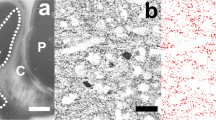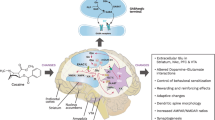Abstract
Addiction is a chronic relapsing disorder and is one of the most important issues in the world. Changing the level of neurotransmitters and the activities of their receptors, play a major role in the pathophysiology of substance abuse disorders. It is well-established that N-methyl-d-aspartate receptors (NMDARs) play a significant role in the molecular basis of addiction. NMDAR has two obligatory GluN1 and two regionally localized GluN2 subunits. This study investigated changes in the protein level of GluN1, GluN2A, and GluN2B in the prefrontal cortex of drug abusers. The medial prefrontal cortex (mPFC), lateral prefrontal cortex (lPFC), and orbitofrontal cortex (OFC) were dissected from the brain of 101 drug addicts brains and were compared with the brains of non-addicts (N = 13). Western blotting technique was used to show the alteration in NMDAR subunits level. Data obtained using Western blotting technique showed a significant increase in the level of GluN1 and GluN2B, but not in GluN2A subunits in all the three regions (mPFC, lPFC, and OFC) of men whom suffered from addiction as compared to the appropriate controls. These findings showed a novel role for GluN1, GluN2B subunits, rather than the GluN2A subunit of NMDARs, in the pathophysiology of addiction and suggested their role in the drug-induced plasticity of NMDARs.



Similar content being viewed by others
References
Richard Isralowitz PAF (2016) Mental health and addiction care in the middle east. Springer International Publishing, New York
Koob GF, Volkow ND (2016) Neurobiology of addiction: a neurocircuitry analysis. Lancet Psychiatry 3:760–773
Koob GF, Le Moal M (1997) Drug abuse: hedonic homeostatic dysregulation. Science 278:52–58
Kaufman E (1976) The abuse of multiple drugs. I. Definition, classification, and extent of problem. Am J Drug Alcohol Abuse 3:279–292
Kaufman E (1977) Polydrug abuse or multidrug misuse: it’s here to stay. Br J Addict Alcohol Other Drugs 72:339–347
Meldrum BS (2000) Glutamate as a neurotransmitter in the brain: review of physiology and pathology. J Nutr 130:1007S–1015S
Traynelis SF, Wollmuth LP, McBain CJ, Menniti FS, Vance KM, Ogden KK et al (2010) Glutamate receptor ion channels: structure, regulation, and function. Pharmacol Rev 62:405–496
Muto T, Tsuchiya D, Morikawa K, **gami H (2007) Structures of the extracellular regions of the group II/III metabotropic glutamate receptors. Proc Natl Acad Sci USA 104:3759–3764
Zhuo M (2009) Plasticity of NMDA receptor NR2B subunit in memory and chronic pain. Mol Brain 2:4
Glasgow NG, Siegler Retchless B, Johnson JW (2015) Molecular bases of NMDA receptor subtype-dependent properties. J Physiol 593:83–95
Kendrick SJ, Lynch DR, Pritchett DB (1996) Characterization of glutamate binding sites in receptors assembled from transfected NMDA receptor subunits. J Neurochem 67:608–616
Cozzoli DK, Goulding SP, Zhang PW, **ao B, Hu JH, Ary AW et al (2009) Binge drinking upregulates accumbens mGluR5-Homer2-PI3K signaling: functional implications for alcoholism. J Neurosci 29:8655–8668
Cozzoli DK, Courson J, Wroten MG, Greentree DI, Lum EN, Campbell RR et al (2014) Binge alcohol drinking by mice requires intact group 1 metabotropic glutamate receptor signaling within the central nucleus of the amygdala. Neuropsychopharmacology 39:435–444
Liddie S, Itzhak Y (2016) Variations in the stimulus salience of cocaine reward influences drug-associated contextual memory. Addict Biol 21:242–254
Paoletti P (2011) Molecular basis of NMDA receptor functional diversity. Eur J Neurosci 33:1351–1365
Kauer JA, Malenka RC (2007) Synaptic plasticity and addiction. Nat Rev Neurosci 8:844–858
Van den Oever MC, Spijker S, Smit AB, De Vries TJ (2010) Prefrontal cortex plasticity mechanisms in drug seeking and relapse. Neurosci Biobehav Rev 35:276–284
Tzschentke TM (2000) The medial prefrontal cortex as a part of the brain reward system. Amino acids 19:211–219
Robbins TW, Ersche KD, Everitt BJ (2008) Drug addiction and the memory systems of the brain. Ann N Y Acad Sci 1141:1–21
LaLumiere RT, Kalivas PW (2008) Glutamate release in the nucleus accumbens core is necessary for heroin seeking. J Neurosci 28:3170–3177
Peters J, Kalivas PW, Quirk GJ (2009) Extinction circuits for fear and addiction overlap in prefrontal cortex. Learn Mem 16:279–288
Peters J, LaLumiere RT, Kalivas PW (2008) Infralimbic prefrontal cortex is responsible for inhibiting cocaine seeking in extinguished rats. J Neurosci 28:6046–6053
Botelho MF, Relvas JS, Abrantes M, Cunha MJ, Marques TR, Rovira E et al (2006) Brain blood flow SPET imaging in heroin abusers. Ann N Y Acad Sci 1074:466–477
Goldstein RZ, Volkow ND (2002) Drug addiction and its underlying neurobiological basis: neuroimaging evidence for the involvement of the frontal cortex. Am J Psychiatry 159:1642–1652
Kozlenkov A, Jaffe AE, Timashpolsky A, Apontes P, Rudchenko S, Barbu M et al (2017) DNA methylation profiling of human prefrontal cortex neurons in heroin users shows significant difference between genomic contexts of hyper- and hypomethylation and a younger epigenetic age. Genes 8:152–170
Christie MJ, Summers RJ, Stephenson JA, Cook CJ, Beart PM (1987) Excitatory amino acid projections to the nucleus accumbens septi in the rat: a retrograde transport study utilizing D[3H]aspartate and [3H]GABA. Neuroscience 22:425–439
Kelley AE, Domesick VB, Nauta WJ (1982) The amygdalostriatal projection in the rat—an anatomical study by anterograde and retrograde tracing methods. Neuroscience 7:615–630
Everitt BJ, Morris KA, O’Brien A, Robbins TW (1991) The basolateral amygdala-ventral striatal system and conditioned place preference: further evidence of limbic-striatal interactions underlying reward-related processes. Neuroscience 42:1–18
Everitt BJ, Parkinson JA, Olmstead MC, Arroyo M, Robledo P, Robbins TW (1999) Associative processes in addiction and reward. The role of amygdala-ventral striatal subsystems. Ann N Y Acad Sci 877:412–438
Mayer DJ, Mao J, Holt J, Price DD (1999) Cellular mechanisms of neuropathic pain, morphine tolerance, and their interactions. Proc Natl Acad Sci USA 96:7731–7736
Zhu H, Brodsky M, Gorman AL, Inturrisi CE (2003) Region-specific changes in NMDA receptor mRNA induced by chronic morphine treatment are prevented by the co-administration of the competitive NMDA receptor antagonist LY274614. Brain Res Mol Brain Res 114:154–162
Mai JK, Paxinos G (2011) The human nervous system. Elsevier Science, Amsterdam
Ashabi G, Sadat-Shirazi MS, Khalifeh S, Elhampour L, Zarrindast MR (2017) NMDA receptor adjusted co-administration of ecstasy and cannabinoid receptor-1 agonist in the amygdala via stimulation of BDNF/Trk-B/CREB pathway in adult male rats. Brain Res Bull 130:221–230
Koob GF, Volkow ND (2010) Neurocircuitry of addiction. Neuropsychopharmacology 35:217–238
Fein G, Di Sclafani V, Meyerhoff DJ (2002) Prefrontal cortical volume reduction associated with frontal cortex function deficit in 6-week abstinent crack-cocaine dependent men. Drug Alcohol Depend 68:87–93
Peters J, De Vries TJ (2012) Glutamate mechanisms underlying opiate memories. Cold Spring Harbor Perspect Med 2:a012088
Bishop SF, Lauzon NM, Bechard M, Gholizadeh S, Laviolette SR (2011) NMDA receptor hypofunction in the prelimbic cortex increases sensitivity to the rewarding properties of opiates via dopaminergic and amygdalar substrates. Cereb Cortex 21:68–80
Koob GF, Arends MA, Moal ML (2014) Drugs, addiction. Elsevier Science, Amsterdam
Bobula B, Hess G (2009) Effects of morphine and methadone treatments on glutamatergic transmission in rat frontal cortex. Pharmacol Rep 61:1192–1197
Zhu H, Jang CG, Ma T, Oh S, Rockhold RW, Ho IK (1999) Region specific expression of NMDA receptor NR1 subunit mRNA in hypothalamus and pons following chronic morphine treatment. Eur J Pharmacol 365:47–54
Bajo M, Crawford EF, Roberto M, Madamba SG, Siggins GR (2006) Chronic morphine treatment alters expression of N-methyl-d-aspartate receptor subunits in the extended amygdala. J Neurosci Res 83:532–537
Kozela E, Popik P (2007) A complete analysis of NMDA receptor subunits in periaqueductal grey and ventromedial medulla of morphine tolerant mice. Drug Alcohol Depend 86:290–293
Herrold AA, Persons AL, Napier TC (2013) Cellular distribution of AMPA receptor subunits and mGlu5 following acute and repeated administration of morphine or methamphetamine. J Neurochem 126:503–517
Anglin MD, Burke C, Perrochet B, Stamper E, Dawud-Noursi S (2000) History of the methamphetamine problem. J Psychoact drugs 32:137–141
Cisneros IE, Ghorpade A (2014) Methamphetamine and HIV-1-induced neurotoxicity: role of trace amine associated receptor 1 cAMP signaling in astrocytes. Neuropharmacology 85:499–507
Crocker CE, Purdon SE, Hanstock CC, Lakusta B, Seres P, Tibbo PG (2017) Enduring changes in brain metabolites and executive functioning in abstinent cocaine users. Drug and alcohol dependence 178:435–442
Acknowledgements
The authors acknowledge the grant support of the legal medicine research center.
Author information
Authors and Affiliations
Corresponding author
Ethics declarations
Conflict of interest
Authors have no conflict of interest to declare.
Electronic supplementary material
Below is the link to the electronic supplementary material.
Rights and permissions
About this article
Cite this article
Daneshparvar, H., Sadat-Shirazi, MS., Fekri, M. et al. NMDA receptor subunits change in the prefrontal cortex of pure-opioid and multi-drug abusers: a post-mortem study. Eur Arch Psychiatry Clin Neurosci 269, 309–315 (2019). https://doi.org/10.1007/s00406-018-0900-8
Received:
Accepted:
Published:
Issue Date:
DOI: https://doi.org/10.1007/s00406-018-0900-8




